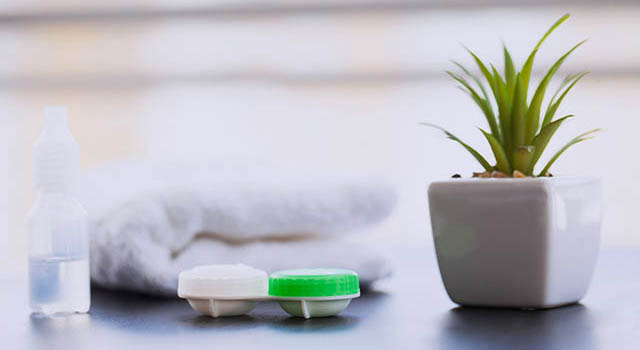Hard contact lenses are often the best contact option, especially if you have an irregular cornea, high prescription or dry eyes.
Hard contact lenses are rigid gas-permeable (RGP) contacts with a rigid design made of a durable plastic material (typically silicone).
RGP contacts are stiffer than conventional lenses, yet they help the eye receive more oxygen than do soft lenses.
You might assume that wearing these lenses is uncomfortable, but it normally only feels uncomfortable when you first put them on or if you get debris in your lenses.
In general, contact lens wear can increase your risk of eye infection. Fortunately, there are steps you can take to greatly reduce this risk.
Tips for inserting a hard contact lenses
- To avoid confusion, always insert the same contact lens first.
- Hands should be washed thoroughly with mild perfume-free soap and water and dried with a lint-free towel or cloth.
- Remove your contact lens from its case and set it on your dominant hand’s index finger.
- Look for any tears, rips, or debris on the lens.
- Rinse the lens with a saline solution that is clear.
- Hold your upper eyelid towards your eyebrow with your non-dominant hand’s middle finger to prevent your eyelashes from getting in the way.
- Pull your lower eyelid down with your dominant hand’s middle finger.
- Slowly bring the RGP lens toward your eye and gently place it on the cornea of your eye, while looking straight ahead.
- Blink multiple times to ensure the lens stays in its correct location, this also allows tears to flow under the lens adding a cushion of comfort.
SEE RELATED: How to Insert and Remove Hard Contact Lenses
Contact an eye doctor near you to learn more about hard contact lenses.
Tips for removing a hard contact lenses
- To avoid confusion, always remove the same contact lens first.
- Wash and dry your hands thoroughly before touching your eyes or contacts.
Here are two different ways to remove hard contact lenses:
The blink method:
- Look straight ahead
- Open your eyes so the eyelids are above and below the contact lens
- Firmly pull the skin on the outer corners of your eyes with your middle finger
- Slowly close your eyelids and you might feel the eyelid catching the edge of the lens
- Blink slowly until your lens emerges.
- Be prepared to catch your lens with a clean white towel or tissue.
The lens might fall onto your cheek or another surface— so if you’re removing your lenses over the sink, make sure the drain is covered with a clean towel so it doesn’t get lost or go down the drain.
The two-finger method:
- Hold your upper eyelid against your eyebrow with your non-dominant hand’s middle finger to prevent your eyelashes from getting in the way.
- Pull your lower eyelid down with your dominant hand’s middle finger.
- Gently pull your eyelids together, forcing the lens to come out, starting at the outer corner of your eye and moving toward your nose.
- Place your RGP lens in a clear storage case filled with fresh saline solution after you’ve removed it.
Tips for caring for hard contact lenses
- Never clean or store your lenses with tap water. Any type of unsterile water significantly raises your chances of developing a potentially sight-threatening eye infection.
- Never wear your contact lenses when swimming, bathing or showering. This significantly raises your developing a potentially sight-threatening eye infection.
- Following your eye doctor’s instructions. Wear your contact lenses only as long as your optometrist suggests.
- Don’t wear contact lenses while sleeping at night or napping, unless the lenses are approved for sleeping.
- If you drop your lenses be sure to properly clean them before reinserting them.
In addition, carrying your glasses with you is always a good idea, in case you need to remove your lenses due to discomfort, blurred vision, or eye irritation.
LEARN MORE: Guide to Contact Lenses
Schedule an appointment with an eye doctor to learn the many tips for hard contact lenses.
Hard contact lenses are often recommended by optometrists, especially if for irregular corneal shapes, high prescription or dry eyes.

